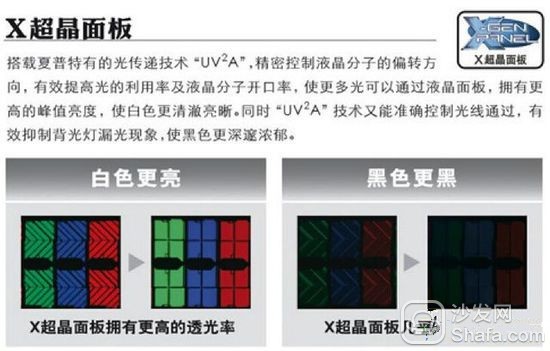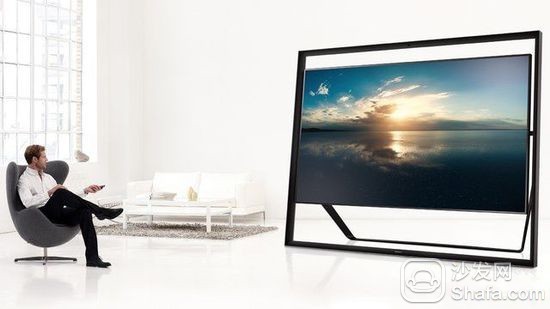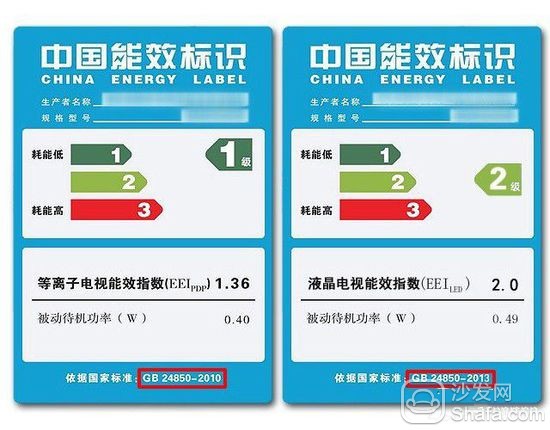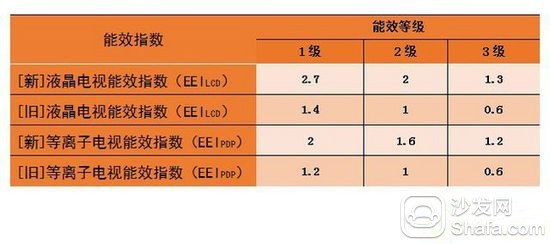The introduction and recommendation of the sales staff in the store all said that the head was correct, so many consumers listened very convinced. In fact, the skills of these salespersons are not necessarily clever, but they know to make full use of various parameters to explain. For TVs, salespeople usually talk about what the TV has, what technology it uses, how many parameters it has, and what effect television has on these technologies. Although many consumers do not know what these technologies and parameters are, there are these sounding high-tech parameters that make them particularly true.

In fact, for LCD TVs today, many parameters can intuitively reflect the corresponding performance, but there are a lot of parameters that are not very practical. If one-sided pursuit of a high index of all parameters, it is not always possible to buy a TV with excellent performance, which may only increase the price. So which parameters should we pay attention to when we buy TV?
Screen type, size, and resolution are the most basic and important parameters of TV. Especially the screen size is one of the most important benchmarks for users to buy TVs. Although consumers can think of these points when buying TV, there are still some areas that need attention.
Screen types are different
The television screen is the most important part of a television, accounting for 80% of the total cost of television. The TV screen directly affects the quality of the picture and is the core part of measuring TV quality. When consumers purchase TVs, it is best to understand the TV panel type to some extent and to see what panels they want to use for the TV.
There are three types of the most common screen types for mainstream LCD TV panel types on the market. One is the general soft screen, one is the IPS hard screen, and the other is the X super crystal screen. Now TV soft screens are basically all VA soft screen panels. The cost of such panels is relatively low, and the effect is not bad. Among them, Korean Samsung's VA screen with its picture quality optimization technology can display first-rate outstanding picture quality. Moreover, in the general soft screen, the A+, A, B, and C level screens will be divided according to the advantages and disadvantages of the panel. The panel of the flat-panel TV must be at least Class A to qualify. Relatively speaking, the A+ class screen will have even better performance in image color, screen brightness and clarity.

IPS hard screen
The most famous manufacturer of IPS hard screens should be the LGD manufacturer. Many friends should also have seen it in the television publicity. The IPS hard screen has a unique liquid crystal molecular structure, and it surpasses the general soft screen in color, contrast, and clarity. And the hard screen can improve the phenomenon of smearing of the moving picture, the picture is more stable, and provides a wide viewing angle.

X super crystal panel
The X super-crystal panel is a Sharp manufacturer's patent, but now some manufacturers in Taiwan are producing this type of panel. The super-crystal panel belongs to the soft-screen range, but it has a unique optical transmission technology that can better control the passage of light, thereby providing higher contrast and color.
Editor Comments: The screen has its own merits, if the pursuit of quality can choose IPS hard screen, X super crystal panel, as well as some well-known manufacturers of soft screen.
Screen size according to local conditions <br><br><br><br><br><br><br><br><br><br><br><br><br><br><br><br><br> The size of the TV screen is the TV's most intuitive impression, and it is one of the important reference standards for our TV purchase Selecting the size of the TV screen should be determined based on the viewing distance in your home, because watching TV must not only ensure good viewing but also avoid fatigue. If you are in the larger living room, watch the distance at three meters or more. Then you can choose 50 inches or more TV, but it is best not to exceed 60 inches. If you are in the bedroom or a smaller living room, then choosing a 42-inch or smaller TV is the better choice.

The screen size is determined based on the size of the living room
Edit Comment: The screen size should be determined based on the viewing distance. A TV with a distance of 50 meters or more at a distance of about three meters is completely free of problems.
Resolution distinguish authenticity
TV resolution is the precision of the screen image and refers to how many pixels the television can display. Nowadays, the hottest in the market is the 4K ultra clear resolution TV. It can provide 3840×2160 four times the resolution of 1080P. It can display more details in the TV picture and significantly improve the sharpness of the picture.

RGBW four-color technology
Response Time and Double Speed ​​Drive Technology Response Time ≠Refresh Rate
Friends who have used CRT TV (parametric picture article) or plasma TV should all know that the higher the refresh rate of the screen is, the faster the response of the screen will be, and the better the performance of the high-speed screen. However, in the era of liquid crystal display, the principle of imaging has undergone a qualitative change. When the LCD screen displays a static image, it is no longer necessary to constantly emit electrons or plasma to refresh, as long as the liquid crystal molecules do not move without animation. Therefore, for the LCD screen, the refresh rate does not represent the screen response speed, nor can it determine the screen's ability to express high-speed images.
Smear problem is the common problem of LCD TVs
The change of LCD TV picture is achieved through the change of liquid crystal molecules. It takes a certain amount of time for the liquid crystal molecules to receive a signal and complete the change. This time is called a "response time." Response time is an important performance indicator of LCD TVs, also called response speed, and the unit is usually milliseconds. The strict definition is the speed at which each pixel of the LCD TV responds to the input signal, that is, the time it takes for the pixel to turn dark or turn from bright to dark. It can be said that the response time of the LCD TV represents the reaction speed of the screen. In fact, it is equivalent to the refresh rate of the CRT TV.
Response time image screen
The severity of smearing on LCD TVs is generally measured by response time. If the response time of the LCD TV is 25ms, that is, the screen can only change one frame in 0.025 seconds, and only 40 frames can be displayed in one second, which is lower than the 50Hz refresh rate of the TV, and the smear phenomenon is inevitable. The response time of LCD TVs is now less than 8ms, that is, at least 125 frames per second can be displayed, and the performance of high-speed images has already performed well. Of course, love sports, and games often watch high-speed sports friends, you can choose to buy 4ms or even higher response time TV.
Edit Comment: Select a TV with a short response time, the general demand can be 8ms, often see sports games can choose to play games 4ms and below.
Double speed drive technology
For the LCD TV, the response speed is fast, the picture will certainly not smear it? Actually not. Since the field frequency of the video itself and the refresh rate of the liquid crystal screen are both fixed at 50 Hz, the phenomenon of high-speed motion still shows flickering and smearing. In order to improve the phenomenon of LCD TV smears, double-speed drive technology was born. This technology optimizes the dynamic effects of LCD TVs through motion estimation and frame interpolation compensation methods. The so-called "double speed" is to increase the refresh frequency of the driver from 50Hz to 100Hz or 200Hz, and insert an operation between the original frames to obtain an "intermediate picture", thereby enhancing the performance of the television on the moving picture.
Double speed drive technology
In addition to shortening the response time, the high refresh rate coupled with "double speed drive" technology can also help solve the problem of LCD TV smear. Sony's "Motionflow" technology and Sharp's "intelligent-speed" technology mean "double-speed drive" technology. Consumers can look at the purchase process.
Editor's comment: The simple high refresh rate is meaningless, and with double-speed drive technology can help solve the smear problem.
Number of interfaces and video decoding interface to be "more" and "new"
Nowadays, the intelligent functions of television have been continuously enriched and developed. Not only does it integrate its own intelligent system, it can easily and easily achieve online on-demand, web browsing, and interactive games. It can also be used as a large-screen terminal in the home to interconnect with various devices to achieve richer and more powerful functions. To connect television to his equipment, naturally, various data lines and interfaces are used to "catch up on the media." Therefore, the type and number of TV's interfaces are also one of the very important parameters when we purchase TVs.
TV interface should be complete
In general, there is only one TV set in the home but it is connected to a variety of different devices. This one-to-many correspondence has put forward two requirements for the interface of TVs: "multiple" and "new".
"Multiple" mainly refers to the complete variety and number of television interfaces. Be careful when choosing a TV. Commonly used interfaces like USB, HDMI, AV, component, network cable, and cable TV must be complete. And for the high frequency of use of the USB interface and HDMI interface, should be set at least two or three, the best location should also be close to the edge, so easy to plug.
"New" refers to the new interface standard, which is to support the latest transmission standards. Our commonly used USB interface is generally 2.0 standard, but if the TV supports USB3.0, you can enjoy faster transmission speed, and the transmission of the file's transmission video is smoother and faster. For high-definition interface HDMI, it should at least support 1.4, it is best to be equipped with HDMI2.0. This new standard interface can not only support more new devices, but also provide a higher transmission speed, making the picture more clear.

USB3.0 interface transmission speed
Edit Comment: The TV interface should be complete in variety and quantity, and it is best to support the latest transmission standards.
Video hard decoding rich Caixing
Nowadays, the contents of cable television and online television are constantly developing. The resources that we can find and broadcast directly from television are also increasing. However, due to different platforms, its TV content is very different from the Internet. There are still many things we want to see that cannot be found on television. Downloading the content on the network to a USB flash drive or mobile hard disk and playing it on the TV is still an indispensable function.

Player can also choose soft and hard decoding
There are two decoding methods for playing local video on TV. One is hard decoding and the other is soft decoding. Hard decoding means that the video is decoded directly by the GPU chip, which saves power and plays smoothly. However, the type and number of hard-decoded video are determined by the GPU hardware. In the face of a wide variety of video encoding and video formats, it is impossible to achieve full support at all.
The soft decoding requires that the TV must have an intelligent system and decode it through the CPU in the hardware. Although the full decoding of the video can be achieved by downloading the decoder software, the system load is high and a high-performance television processor is required to complete the decoding. Otherwise it will appear, the video playback is stalled or cannot be played normally.
Be sure to confirm whether the commonly used video format supports
Energy efficiency and power are very important Energy levels, power
TVs, as household appliances that are used at home with a high frequency and duration, consume a significant portion of their total electricity consumption. Even if we do not advocate low-carbon energy conservation, we should consider the cost of electricity. When you buy a TV, don't just look at how the picture is, how bright it is, how it's color, how it's functional, and how much energy your TV should consume. If you want to know the power consumption of TV, just pay attention to the three indicators of TV.
First, the energy efficiency label
Energy efficiency labeling is the most intuitive indicator we can use to judge the energy efficiency of a household appliance. According to national regulations, LCD TVs on the market have been measured according to the latest flat panel TV energy efficiency standards and are affixed with the latest energy efficiency labels. The efficiency rating of flat-panel TVs is divided into three levels, with one being the most energy-efficient, and the second and third-level energy efficiency decreasing in turn. Selecting a TV with a high energy efficiency rating may be more expensive, but it can save you a lot of electricity.

New flat-panel televisions require high energy efficiency standards
However, there are two points to note about energy efficiency labeling. The first point is that different types of appliances have different energy efficiency assessment standards. Even the standards for CRT TVs, plasma TVs, and LCD TVs are different, and they cannot be confused. Do not assume that the energy efficiency value of the TV you buy for energy efficiency class 2 is the same as the refrigerator of the same level. In the second place, flat-panel TVs introduced new energy efficiency evaluation standards from last year and completed the rebranding in October this year. The new energy efficiency requirements are much higher than before. TVs that were once used in the first-level energy efficiency may only be level 2 under the new standard. Therefore, do not compare the energy efficiency standard of the old LCD TV in your home with the new energy efficiency logo.

Comparison of Energy Efficiency Index between Old and New Flat TVs
Second, the operating power
The energy efficiency label of the TV indicates the energy efficiency of the product. It represents the product's usage rate of electric energy and has no direct relationship with the screen area. In general, TVs with large screens shine brightly and consume a lot of energy, but energy efficiency is not necessarily low. So after seeing the energy efficiency, you should also look at how much power the TV is running, and it is not within your own acceptance. In general, 55-inch LCD TVs consume between 100W-200W, while 42-inch TVs consume more than 50W-100W.
Many TVs have power saving features
Third, standby power
As the name implies, the standby power is the power consumed by the TV when it is switched on and there is no power on. This value will be marked below the energy saving logo. The state requires the passive standby power of the flat panel TV to be within 0.5 W. If it exceeds 0.5 W, it is definitely not up to the standard TV.
Recommended installation sofa butler Download: http://app.shafa.com/
